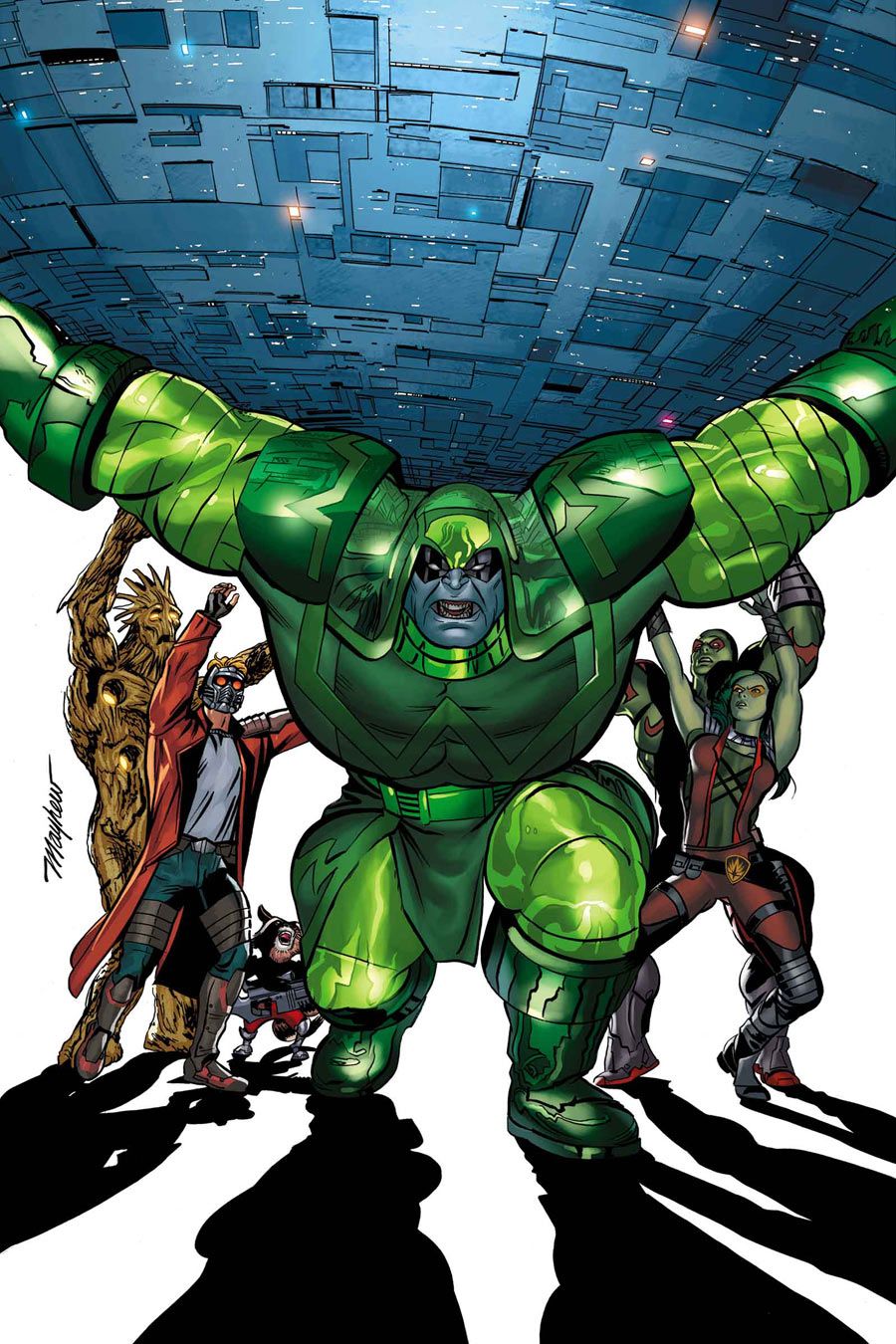With the sixth chapter of "The Black Vortex" filling its pages, "Guardians Team-Up" #3 feels as though this title was created to house a chapter of the event and keep things humming along. However, writer Sam Humphries and artist Mike Mayhew embed Ronan the Accuser into the heart of "The Black Vortex" saga, making a tangential case for applying the term "team-up."
It matters very little what title is on the cover of this chapter of the saga, as the principal players in the story remain the same. "The Black Vortex" is a story about the Guardians of the Galaxy and the X-Men. Ronan joins them in a comic that happens to be the sixth chapter of that shared adventure, as this story follows the base formula for Marvel's traditional construction of a team-up: bring together interested parties, pit them against a common foe and send everyone on their merry way after. Historically, the more successful and memorable issues of "Marvel Team-Up" felt like a Spider-Man story with a visiting guest star but, in "Guardians Team-Up" #3, the star of the show is clearly Ronan and, collectively, the Guardians barely register beyond ensemble players in a sprawling cast. Star-Lord gets the most dialogue of the Guardians, but he's played for laughs more than ability.
Humphries introduces a new adversary in the quest for the Vortex, dramatically adjusts the arc of Thane's story and drops a (potentially) major bombshell on the state of reality in the Marvel Universe. Using Ronan as the point of view character for the reader, Humphries invites the readers directly into the action but then steps back once the battle is engaged, letting other characters narrate the circumstances. Ronan welcomes the reader into this issue and also sends them on their way come the final page but, despite his importance to this issue, he barely feels integrated to the broader tale.
Artist Mike Mayhew has a solid handle on Ronan and provides a visual impact between the Ronan that greets readers and pleads with the Supreme Intelligence in the opening of this story and that same Accuser as readers finish this issue. Some of the intermediate visuals, however, come across quite pedestrian and perhaps rushed. When Ronan engages Hala's attackers, the figures barely fill the panels. Yes, this provides a sense of perspective and indicates the vastness of the scope of this battle, but it also pushes the reader away from the action, making the conflict and contact seem less impactful. The figures could push the gutters back or break the frames of their panels but don't. Letterer Cory Petit doesn't hold back, however, using word balloons to span gutters and to drive the narrative through the zee-shaped panel work Mayhew delivers. Rain Beredo's colors are bright and unapologetic, but some of the effects, like Angel's Vortex wings, reach beyond rendering and become fields of color.
"Guardians Team-Up" #3 gives readers what Marvel perceives they want: more stuff with "Guardians of the Galaxy" on it. Mayhew's image of Ronan hefting Hala sells the cover but, like the interior, it matters very little what else is set as a distractor: this is an image of Ronan, take it or leave it. As for "Guardians Team-Up" as a series, it is underwhelming so far, but I'm still holding tightly to the promise and potential packed into any "team-up" adventure.

